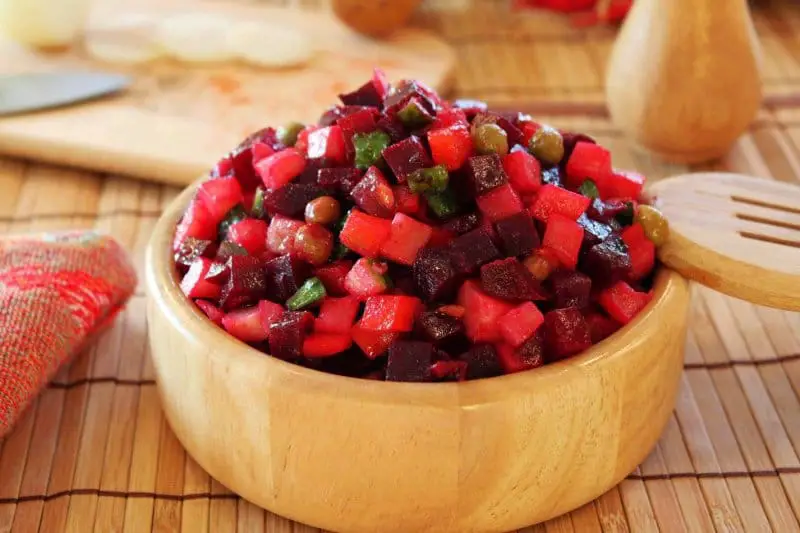
Why It’s Called “Vinegret”
(Почему он носит такое название?)
The name “vinegret” actually comes from the Western conception of the word (vinaigrette), as in the past the salad was customarily topped with a vinaigrette made from mustard. The name for the salad has survived through the centuries, even though now the mustard vinaigrette has been replaced by plainer dressings such as mayonnaise, olive oil, or sunflower oil.
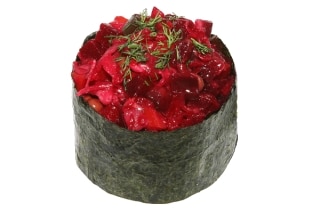
The name vinegret is not the only thing that may have come from the West, either. It is widely accepted that the dish itself originated either in Germany or in the lands of one of Russia’s Scandinavian neighbors. The latter theory is especially intriguing, as a very common pairing of food is that of vinegret with herring, which is a staple of Scandinavian cuisine. In an English cookbook dating from 1845, there is a recipe for a Swedish herring salad, which calls for Norwegian herring to be mixed with many of the ingredients in vinegret – beets, pickles, potatoes – and the mixture to then be topped with a dressing of oil, vinegar, egg yolk, and sour cream.
How and When to Eat Vinegret
(Как правильно есть винегрет?)
There is really no right or wrong way to eat vinegret. As mentioned above, there is some regional variation as to what ingredients might be added to the basic recipe. For example, in Lithuania and the Baltic States, beans are a staple in винегрет. Other popular additions include mushrooms and a generous amount of dill used as garnish. The oil used for dressing varies as well, although this is often due to personal preference and the inheritance of family recipes. Some even throw a bit of fish directly into vinegret, although it is much more common to have it as a side dish to accompany the salad.
In gourmet versions of the salad, you may also find apples, squid, beef, hard-boiled eggs, lettuce, sausage and more. The sauce can also be finessed with hot mustard, vinegar, sugar, pepper, or other spices. These ingredients are typically not considered traditional elements of the salad as known by most Russians, however.
Vinegret can be eaten at any time of the year, being safe for even during Orthodox fasts due to the fact that it can be made with purely oil and vegetable content. It is, however, often referred to in Russia as a “зимний салат” (winter salad), a category which also includes another popular Russian dish with a French name, Olivier. The category refers to salads that can be made with only vegetables that keep well (such as potatoes, carrots, and beets) and those that have been preserved (such the many pickled products that are often featured in Russian cooking and Russian meals).
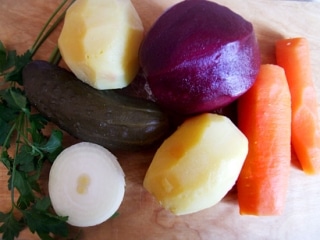
Vinegret is a dish often seen at holidays (it is especially popular for New Year’s celebrations) or upon the arrival of important guests, as the time-consuming dicing and chopping of all the ingredients involved is not conducive to most everyday cooking schedules. Furthermore, it is a dish that spoils easily once all the ingredients are combined, even when refrigerated, so it is best served to a group that one knows will go through the entire batch fairly quickly.
How to Prepare Vinegret
(Как правильно приготовить?)
Vinegret is not a technically complicated dish to prepare; most of the work comes in dicing the vegetables into small, uniform pieces. There are also several shortcuts that one can use (and that many modern-day Russians do use) to make the preparation of vinegret even easier. For example, instead of traditional sour, pickled cabbage, which was, in the past, a homemade product that needed time to ferment, many now use mass-produced sauerkraut. Some also use canned, rather than fresh, beets, which cuts out several steps in the preparation process – namely the boiling, peeling, and cutting of the beets.
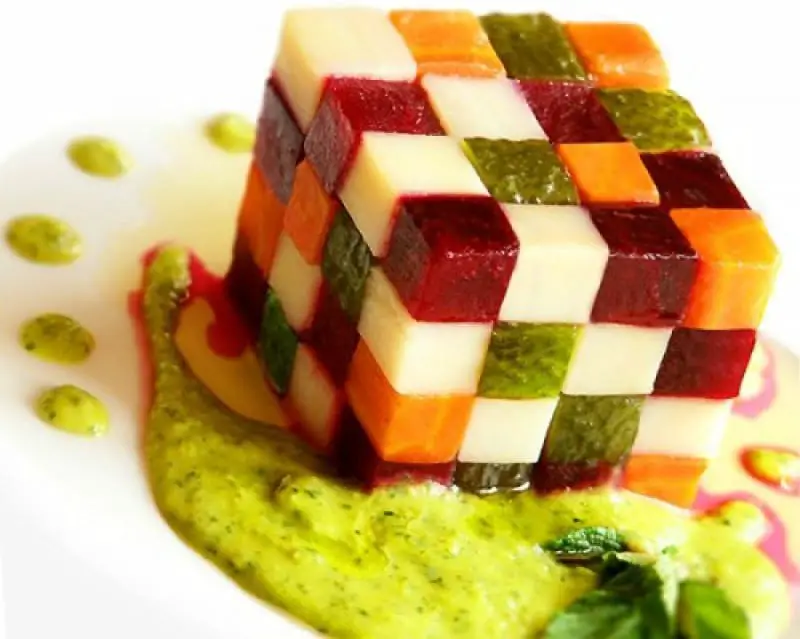
Many Russians will insist that the process be carried out in that order as well: boiling, peeling, and then cutting. The reasons for this are varied. Some say this improves the flavor, some argue that peeling a cooked vegetable is more efficient, as it is then easier to remove only the skin with very little of the pulp. Still others argue that it is primarily to allow all the cooked ingredients to be boiled at once in the same pot without the beets dying the entire mess a deep red. Whatever the reason, the process is nearly always carried out in this way.
Note as well that keeping the beets from coloring the dish when it is mixed together is one of the main challenges of producing a proper, appetizing винегрет. This can be easily done, however, by simply adding the oil to the beets first before mixing the beets with the rest of the ingredients.
As vinegret is often a festive dish, many do most of the preparation a day in advance, and then combine the ingredients with the oil dressing right before the salad will be served. This is also the best, and frankly only, good way to preserve vinegret if one knows that it will not all be eaten right away; take out an amount of the prepared vegetable components that will definitely be eaten and then combine only that bit with the dressing.
Vinegret Recipe
(Давай Приготовим!)
| Винегрет | Vinegret |
Ингредиенты
Приготовление
|
Ingredients
Preparation
|
| Винегрет с грибами | Vinegret with Pickled Mushrooms |
Ингредиенты
Приготовление
|
Ingredients
Preparation
|
| Винегрет с яблоками | Vinegret with apples |
Ингредиенты
Приготовление
|
Ingredients
Preparation
|
Our Favorite Vinegret Videos
An interesting video from a cooking show geared towards men, trying to make the preparation “simple and tasty, but nonetheless, beautiful.” Note that it also emphasizes the pairing of vinegret and herring, and brings back the mustard from the dressing for which the salad is now named.
A video from Едим Дома! (We’re Eating In!), an NTV cooking show, highlighting the making of vinegret with beans. The host is Yulia Vysotskaya – a former actress who is now essentially the Russian Martha Stewart.
A nicely-orchestrated video showcasing modern shortcuts for making tasty but quick vinegret for the holidays.
You Might Also Like

Judaism in Russia: Моя Россия Blog
In this text, Tajik blogger Roxana Burkhanova describes, in Russian, the history of Jews in the Russian Empire, the USSR, and the Russian Federation. While the resource focuses on Russia, this also includes Jews in regions which are no longer part of Russia – including Central Asia, the Caucasus, and Central and Eastern Europe. More […]
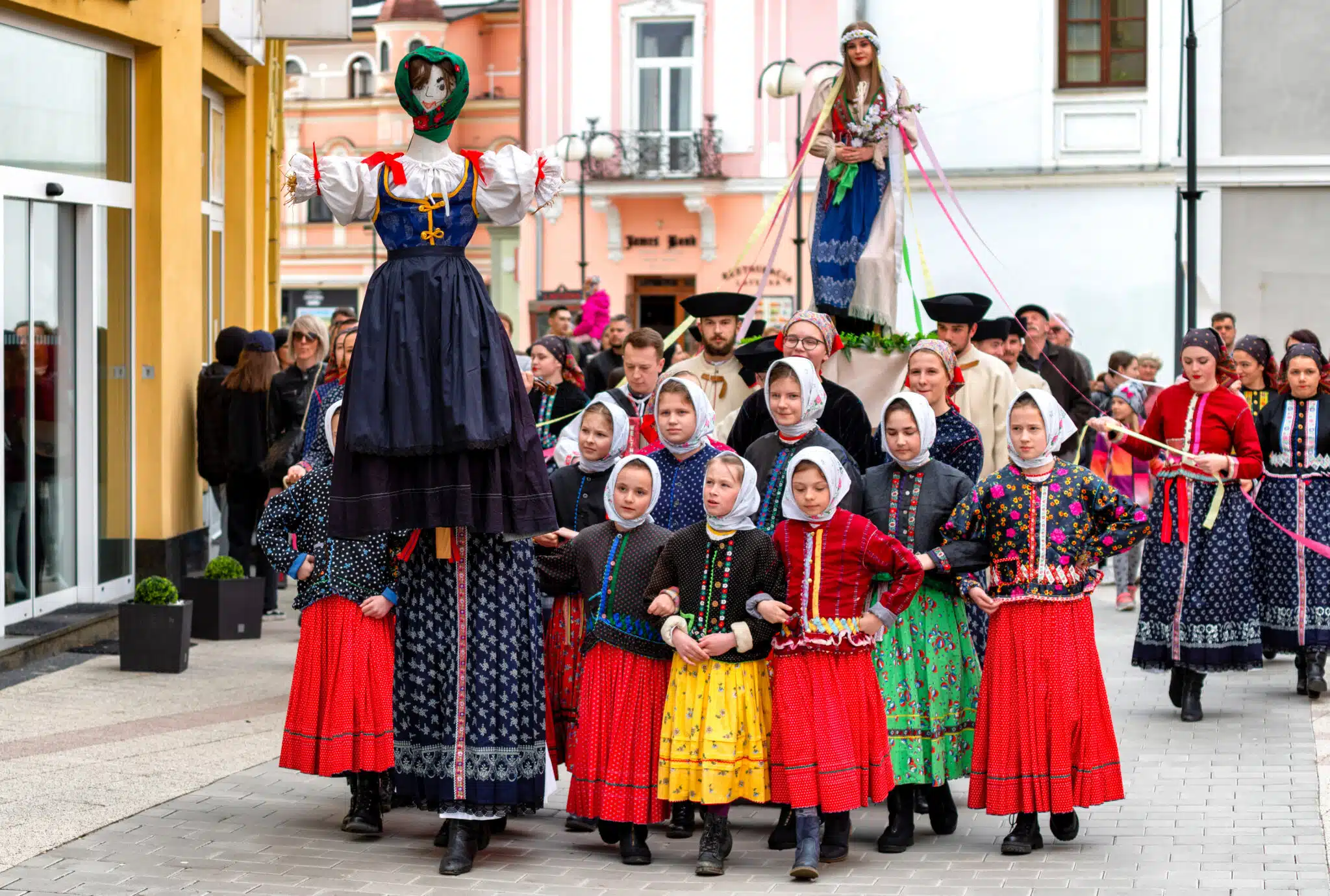
Maslenitsa, Masliana, Marzanna: Spring Holidays of the Slavs
Rites of welcoming spring and saying goodbye to winter are some of the oldest holidays preserved across Slavic cultures. While Russia’s Maslenitsa is by the far the best-known, multiple versions exist across the diverse Slavic landscape. Amazingly, despite the fact that these societies are now deeply Christian, all of these holidays are still celebrated in […]

Blini, Mlintsi, Palačinke! Making Slavic “Pancakes”
Blini (блины) are a breakfast favorite in many Eurasian countries. The most basic recipe involves just flour, milk, and eggs. The resulting very thin pancake can be enjoyed in a variety of ways from sweet to savory. Although the recipe is quite simple, they are somewhat labor intensive to make and thus are often associated […]
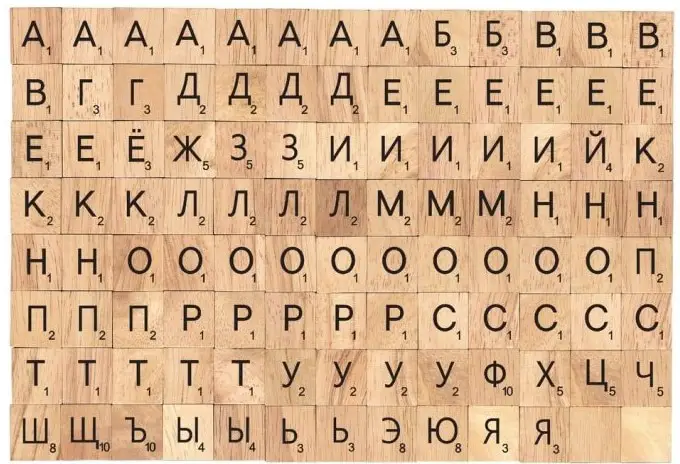
Resources for Students of Russian
This extensive list of web resources to assist students learning the Russian language was developed by SRAS and is now hosted on Folkways, part of the SRAS Family of Sites! Disclosure: Some of the links below are affiliate links. This means that, at zero cost to you, we will earn an affiliate commission if you […]
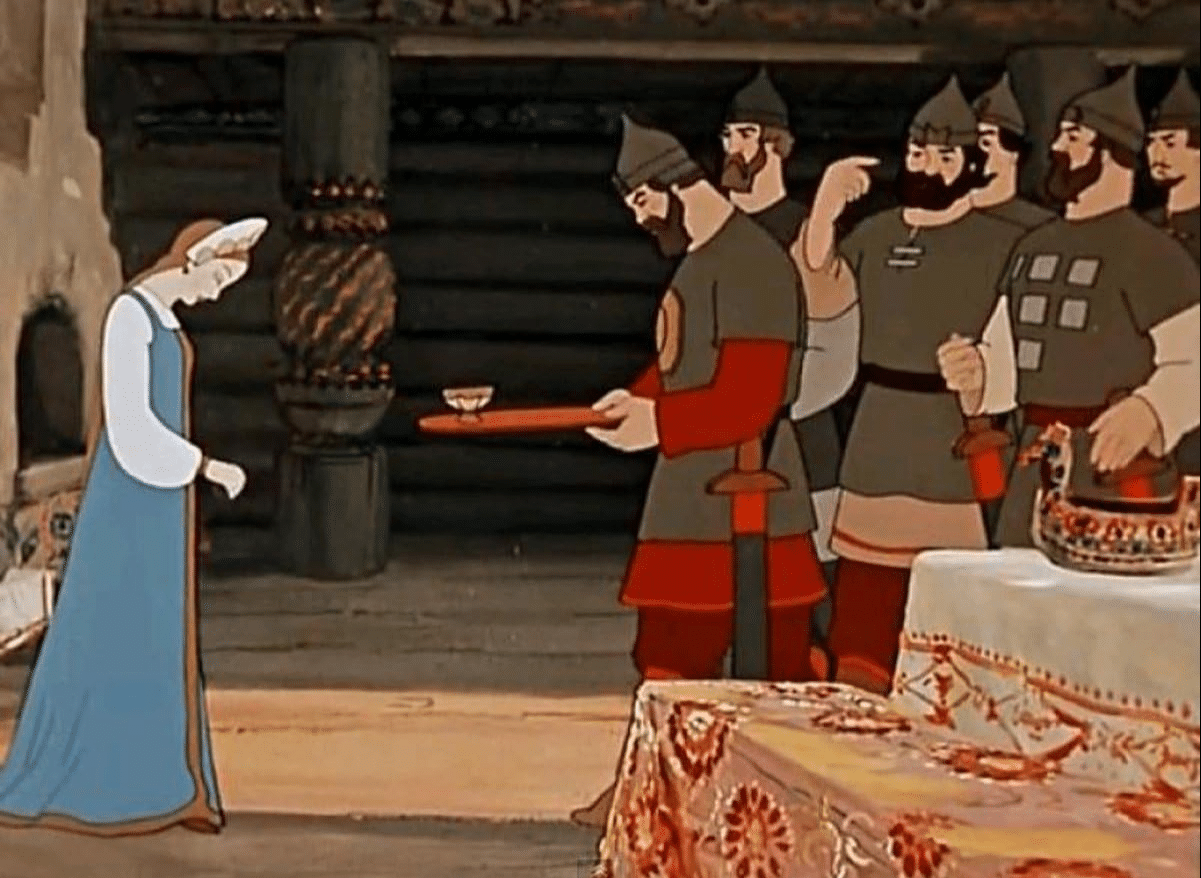
Russian Greetings Through the Ages: Vocabulary and History
Greetings are an important part of Russian culture. These greetings have evolved through the ages, reflecting first pagan worldviews and then Christian. Modern Russian greetings are rooted deep in a tradition of showing respect, building community, and often offering blessings of health. Let’s take a look at how greetings have changed in Russian over time. […]


